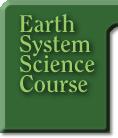Use
of Technology
This
course emphasizes the use of technology. To communicate with
the other participants and your facilitator, you will log
on to the Internet. It will enable you to send email and to
enter virtual classroom spaces for "threaded" discussions
and database entry. To conduct research on assigned topics,
you will rely extensively on CD-ROM resources and the World
Wide Web to find the information you need. Some or all of
these computer technologies may already be familiar to you.
You will
also view remotely sensed images in each three-week cycle.
These images of the earth are taken by instruments mounted
on satellites. Looking at remotely sensed images can help
people to understand how the whole earth functions--how its
subsystems (the lithosphere, atmosphere, hydrosphere, and
biosphere) interact with one another to produce global flow
and change. Remotely
sensed images taken over decades can show patterns of change
in the more fluid spheres--the hydrosphere, atmosphere, and
biosphere. Examples include El Niño, ozone depletion, and
global warming. Remotely sensed images collected over longer
time periods may someday reveal changes in the lithosphere.
Examples include mountain formation and erosion, oceanic basin
formation, and other major hard features.
By acquiring
proficiency in these varied technologies through this online
course, you will be better prepared, when you return to your
own Earth Science classrooms, to facilitate technology-based
learning in your students.
[
Welcome ] [Earth's
Spheres] [ Earth System Science
] [ PBL Model ] [ Use of Technology
] [ Science as Inquiry ] [ Participation
] [ Assessment Overview ] [ Course
Sections ]
[ Home ] Intro [ Guide
] [ Outline ] [ Classroom
]
HTML
code by Chris Kreger
Maintained by ESSC Team
Last updated July 13, 2000
Privacy
Statement and Copyright©
1997-2000 by Wheeling Jesuit University/NASA Classroom of the Future™. All
rights reserved.
|



